What's New
Displaying results 2001 - 2010 of 4052
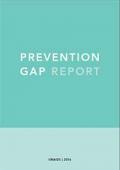
Resource | Publications,
Tremendous progress against AIDS over the last 15 years have inspired a global commitment to end the epidemic by 2030.
Remarkable scale up of antiretroviral therapy has put the world on track to reach the target on AIDS-related deaths. However, problems remain with HIV prevention. Declines in new HIV infections among adults have slowed, threatening further progress towards the end of the AIDS epidemic. Since 2010, the annual number of new infections among adults (15+) has remained static at an estimated 1.9 million [2015 range of 1.7 million–2.2 million].
Efforts to reach fewer than 500,000 new HIV infections by 2020 are off track. This simple conclusion sits atop a complex and diverse global tapestry. Data from 146 countries show that some have achieved declines in new HIV infections among adults of 50% or more over the last 10 years, while many others have not made measurable progress, and yet others have experienced worrying increases in new HIV infections.
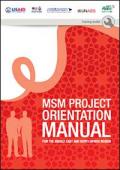
Resource | Tools,
This orientation manual is the first of four volumes of a training toolkit that complement each other. The manual was developed to provide planners and managers working with HIV MSM programme prevention and support services with the necessary information to develop sympathetic, evidence-based and comprehensive HIV prevention and support services for MSM in the MENA region. The resource is useful to both experienced programme implementers as well as those who are beginning to plan new HIV prevention and care services for MSM.

Resource | Publications,
The scope of HIV prevention and treatment options has never been wider than it is today. The world now has the scientific knowledge and experience to reach people with HIV options tailored to their lives in the communities in which they live. This life-cycle approach to HIV ensures that we find the best solutions for people throughout their lifetime.
In this report, UNAIDS is announcing that 18.2 million people now have access to HIV treatment. The Fast-Track response is working. Increasing treatment coverage is reducing AIDS-related deaths among adults and children. But the life-cycle approach has to include more than just treatment. Tuberculosis (TB) remains among the commonest causes of illness and death among people living with HIV of all ages, causing about one third of AIDSrelated deaths in 2015. These deaths could and should have been prevented.
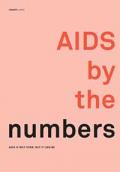
Resource | Data Sheets,
Huge progress has been made since 2000 and millions of lives have been saved. But there are still important milestones to reach, barriers to break and frontiers to cross. The world has agreed to meet a set of global targets by 2020 as part of UNAIDS Fast-Track strategy to end the AIDS epidemic as a public health threat.

Resource | Publications,
Trying to understand why a mother died during pregnancy or childbirth, or even weeks later, can be incredibly frustrating. The medical causes may be known, but the full explanation for death from a treatable condition such as eclampsia remains unclear. Care may have been available in the woman’s community or in a nearby health facility, but still she died.
This report on maternal death surveillance and response (MDSR) quotes harrowing examples of death from preventable maternal causes such as the story of Assetou, who died while being taken to hospital on the back of a motorcycle. Or of Dhani, who died before her family could call an ambulance to their isolated village at night. The physical suffering of these women and the panic and misery felt by them and their families are almost impossible to imagine.
MDSR is a relatively new approach to investigating maternal deaths and taking action based on the findings, which has evolved from the established system of maternal death review (MDR). It builds on MDR by stressing the importance of follow-up action (response) and of continual monitoring to ensure that recommendations are acted on. As a result, MDSR has been described as a “continuous action cycle for monitoring of maternal deaths”. The approach is new but the elements of MDSR have developed over several decades.
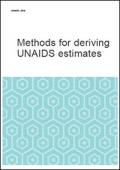
Resource | Publications,
UNAIDS annually provides revised global, regional and country-specific modelled estimates to track the HIV epidemic, using the best available epidemiological and programmatic data. Modelled estimates are required because it is impossible to count the exact number of people living with HIV, people who are newly infected with HIV or people who have died from AIDS-related causes in any country. Knowing this for certain requires testing every person for HIV regularly and investigating all deaths, which is logistically impossible and ethically problematic. Modelled estimates and the lower and upper bounds around these estimates provide a scientifically appropriate way to describe HIV epidemic levels and trends.

Resource | Publications,
This inaugural report on the global Sustainable Development Goals (SDGs) is a first accounting of where the world stands at the start of our collective journey to 2030. The report analyses selected indicators from the global indicator framework for which data are available as examples to highlight some critical gaps and challenges. The list of SDG indicators agreed upon by the UN Statistical Commission in March 2016 will be subject to refinements and improvements as methods and data availability improve.
Every journey has a beginning and an end. Plotting that journey and establishing key milestones along the way requires accessible, timely and reliable disaggregated data. The data requirements for the global indicators are almost as unprecedented as the SDGs themselves and constitute a tremendous challenge to all countries.

Resource | Publications,
This second edition of Global Prison Trends looks at some of the key developments in prison policy and practice since the first edition was published.
The report focuses specifically on the most significant developments in how prison is being used and how prisons are being managed and organised. The report includes information and examples from various countries and regions. These are not intended to ‘single out’ certain countries, but are meant to be illustrative of trends and challenges.
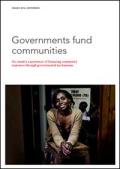
Resource | Publications,
UNAIDS reviewed the experiences of six countries that have supported community-based HIV programmes through a variety of government mechanisms: Argentina, Brazil, India, Malawi, Malaysia and the Republic of Moldova. Every country is different, but lessons from these countries’ experiences can inform approaches that will be appropriate in other countries’ unique contexts. The examples from Argentina, Brazil, India and Malaysia demonstrate how national resources available for the AIDS response can be allocated to civil society. The examples from Malawi and the Republic of Moldova demonstrate how Global Fund to Fight AIDS, Tuberculosis and Malaria (Global Fund) resources allocated to the government can be directed to civil society organizations.
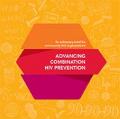
Resource | Publications,
This brief has been produced by the International HIV/AIDS Alliance in partnership with UNAIDS and follows on from the 2015 UNAIDS reference paper, Fast Tracking Combination Prevention.
It is intended for advocates from community-led organisations including:
- networks of people living with HIV
- civil society organisations active in the delivery of HIV/AIDS programmes
- groups and people working with and representing populations most affected by HIV (particularly those working with women, youth, key populations, etc).





